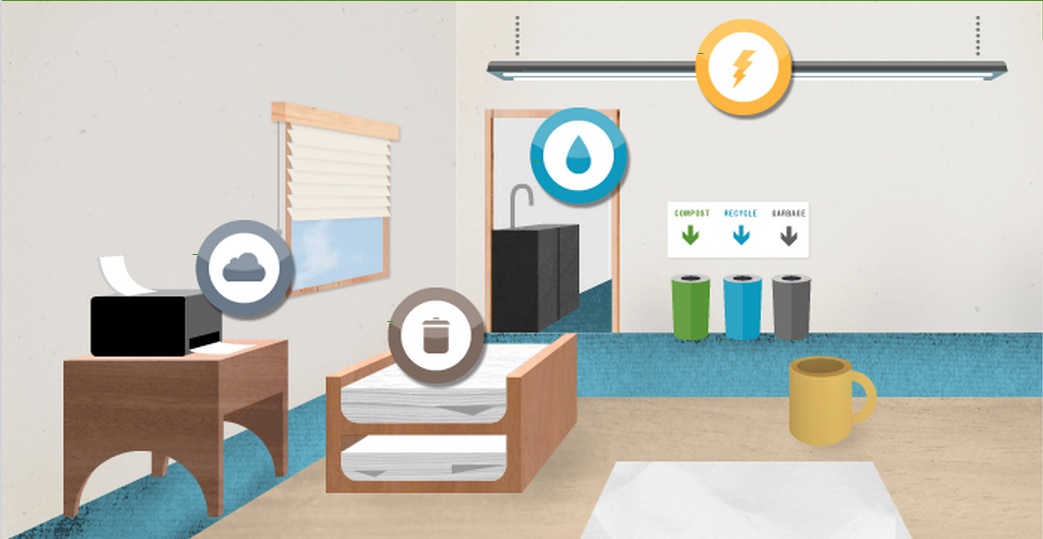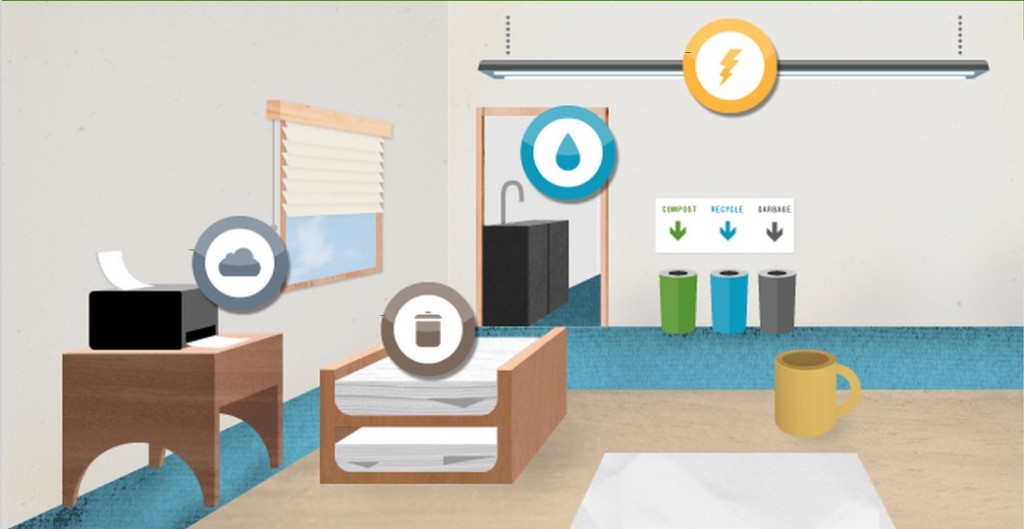Can going green really makes business sense? Is it more costly than it’s worth? Is it too difficult?
Recently I stepped out to attend a small business symposium led by our local City of Cupertino sustainability experts Erin Cooke and Amanda Leonis. Cupertino has answered the above questions for nearly 100 local businesses through a new business support service called GreenBiz Cupertino. To date, their program has saved the average participant over $1,000 annually — and in the process, it’s reduced total water use by over 1.5 million gallons and electricity by 73,797 kWh. The program also certifies businesses who follow its list of standards, giving each business a “stamp of compliance” they can use to show customers their commitment to green practices.
Does your business stand to gain by joining a green certification program?
Seagate may not typically make a ton of PR noise about its environmentally friendly practices. But the company’s bottom line sure benefits from efficiencies developed in the name of green.
If you work with your local or state government, chamber of commerce or other recognized organization to earn an official green certification, you can advertise to customers that you’re certified, giving you a leg up with conscientious consumers And, often the organization lends expertise, connects businesses to new services, and may offer free equipment and financial incentives to help achieve the green standards.
Cupertino’s GreenBiz team works with each business to introduce a suite of sustainability measures that meets the shared objectives of property owners and tenants by conserving energy and water, minimizing material use and disposal, preventing pollution and cutting costs.
Through a local government or chamber of commerce program, you can expect to:
- Access support programs, including energy, waste and water assessments, equipment installations and new products to test in your business.
- Gets referrals to efficiency rebate programs
- Operate efficiently, strengthening the bottom line, saving money on utility bills by cutting energy, water, and material waste.
- Reduce purchasing costs through new practices and waste generation through single-stream recycling and composting services.
- Improve employee morale, productivity and wellness, and reduce absenteeism.
- Become recognized as a good neighbor for your contribution to the health of your community through shared organizational events and increased web presence.
- Hold a marketing edge with environmentally aware consumers; get access to a Green Business marketing tool kit.
Search your local and state government websites for “sustainability,” “environmental” or “green” standards bodies to see what services they may offer. Some examples are the California Green Business Program, the New York Green Business Bureau, and the Florida Green Energy Works certification program.
Even if you don’t have an immediate way to join a certification program, your business can benefit just by executing some simple changes on your own. You’ll still benefit from reduced costs, and you can still list your environmentally friendly practices in your marketing materials, without an official certification. Basic areas to consider include using recycled-content paper and copying double-sided, cleaning with less-toxic products, using energy efficient lighting systems, and conserving water with low-flow toilets and faucet aerators.
Certification programs are generally free to participate in, so don’t hesitate to sign up and get the extra help they offer. But you can start immediately by looking up the standards of your local organization, and getting a jump on some the recommended green checklists there. I’ll include a few examples below — tell me, which of these standards does your business already adhere to? Which could you easily implement now?
- Purchase copier/printer paper with at least 30% post consumer waste.
- Purchase garbage bags with the highest recycled content available.
- Purchase carpet, carpet undercushion, or flooring. with recycled content.
- When building or remodeling: use recycled content, refurbished, or salvaged materials such as building fixtures, ceramic tiles, drywall, insulation, concrete, composite lumber/wood, roofing, flooring, cabinets, ceiling tile, interior paneling, etc.).
- Retailers – If you provide disposable bags to your customers for items purchased or supplied by your business, you must primarily provide paper bags instead of plastic. Plastic bags should only be provided when absolutely necessary.
- Eliminate the use of polystyrene containers. Utilize one of the following options (in order of preference): paper, paperboard, compostable containers (starch-based sugarcane, rice hulls, and/or corn), or recyclable plastic.
- Subscribe to journals, trade magazines, etc. online rather than receiving hard copies.
- Centralize purchasing to eliminate unnecessary purchases and ensure that all waste reduction purchasing policies are followed.
- Donate furniture, supplies, scrap materials, etc., or use a waste exchange program where another business can take your unwanted items.
- Designate a reuse area for office supplies such as binders, folders and staplers.
- Use energy efficient exit signs, such as LEDs.
- Complete regularly scheduled maintenance on your HVAC (heating, ventilation and air conditioning) and refrigeration system at least twice a year.
- Use weather stripping to seal air gaps around doors and windows.
- Use a 365 day programmable thermostat to control heating and air conditioning.
- Use drip irrigation.
- Adjust the irrigation schedule monthly during irrigation season, or as needed
—
Who is John Paulsen? A former small-business leader myself, I feel your pain (and joy) and hope you’ll enjoy the blog. I launched and ran a well-regarded production company in San Francisco with a team of 9 brilliant, hard working people. I learned to manage a wide array of tasks a small business must handle — business strategy, facilities design, HR, payroll, taxes, marketing, all the way down to choosing telecom equipment and spec’ing a server system to help my team collaborate in real-time on dense media projects from multiple production rooms. I’ve partnered with and learned from dozens of small business owners.
.









Leave A Comment